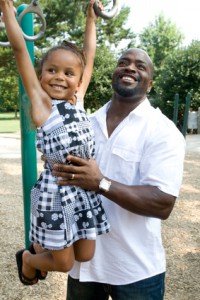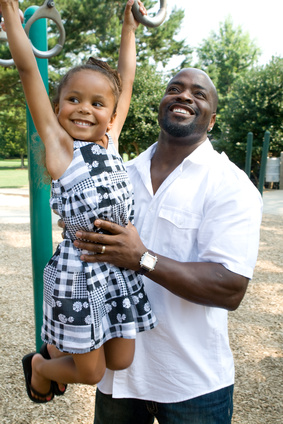Remember those movies your children wanted to watch over and over again? They watched them so many times that they quoted the lines as they watched the show…and kept quoting them after the show ended…and when asking to watch the show again. If you were like me, the movie became boring. But our children never seem to tire of watching the same thing over again. They watched it each time with the same zeal as the last time.
In fact, children love repetition. It provides them with a sense of predictability that anchors them in the safety of something they know in the midst of a complex world they are navigating for the first time. When parents establish rituals that assure predictability in a child’s world, their children flourish. Children experience an increased sense of security within the repetitive pattern of a ritual. They grow more confident within the safety of daily (AKA: repetitive) rituals. They also gain mastery over their environment and develop a greater sense of agency as a result. Even better, rituals are simple, everyday practices you can establish. (Read Add Meaning to Life by Building Routines for more.) For instance, here are a few rituals you can easily establish with your children.
- Give your children a hug every night at bedtime.
- Read to your child at bedtime.
- Eat breakfast at the same every Saturday morning with your child.
- Send your child a text every morning.
- Schedule a regular outing with your child every week. (This is the best advice for dads…ever!)
These simple habits become repetitive rituals that reap huge dividends, like a stronger relationship with your child, a growing sense of agency and confidence in your child, and a greater tendency for your child to listen to you.
You can also establish rituals that build their sense of ability and family involvement. For instance, children love to work with their parent. Let them do so.
- When you “work” to get dinner on the table, let them be involved. They can put the silverware on the table, cut the vegetables, or put ice in the glasses.
- When you “work” to do the laundry, let them help throw clothes into the washer or dryer. Let them fold the socks.
- As you clean the house, let them dust the end table or empty the dustpan into the
trash. - See What is Scaffolding in Montessori and How We Can Apply It At Home for more ideas.
As your child matures, their tasks may become more complex. Still, they will be “working” with you. That’s the ritual: working side by side with mom and dad to complete meaningful tasks around our home.
The repetition of ritual is a beautiful thing for you and your child. They will help your family “run smoothly.” They will allow you to know one another better. They will build a stronger, more loving family. Get started today.







 “Really,” I would ask. “What’s her name?”
“Really,” I would ask. “What’s her name?”  my fears and saved the day (well, I think so anyway). For instance, when our children were little, my wife would say, “I’m going to put the kids down.” I used to work in a pet cemetery and “putting something down” was not a good thing. Surely she wouldn’t do that. Maybe she only planned to verbally slander them, putting them down with her words. Surely she wouldn’t do that either! But, she wasn’t holding our daughters, so how else could she “put them down”? (Maybe that’s the literal part that my family accuses me of.) Anyway, I had to ask. I had to check the accuracy of my understanding of her statement. Thankfully, she clarified. She only planned to get our daughters ready for their nap. (What a relief–why didn’t she just say so?)
my fears and saved the day (well, I think so anyway). For instance, when our children were little, my wife would say, “I’m going to put the kids down.” I used to work in a pet cemetery and “putting something down” was not a good thing. Surely she wouldn’t do that. Maybe she only planned to verbally slander them, putting them down with her words. Surely she wouldn’t do that either! But, she wasn’t holding our daughters, so how else could she “put them down”? (Maybe that’s the literal part that my family accuses me of.) Anyway, I had to ask. I had to check the accuracy of my understanding of her statement. Thankfully, she clarified. She only planned to get our daughters ready for their nap. (What a relief–why didn’t she just say so?) need or desire. That person puts their need into words. Those words are code for what they really want to say. The listener has to decode the true meaning of the speaker’s code words…and that may prove tricky. After all, my wife coded “I’m going to get the girls ready for a nap” as “I’m putting the girls down.” I had to clarify my understanding of that code before making a rash response. My daughter coded “I want a friend of the male gender” as “Can I date him?” Whoa Dad, clarify your understanding before you get the shot gun! That is what active listening is all about—making sure you really understand the want, need, or desire behind the coded message. Doing so has some very positive results:
need or desire. That person puts their need into words. Those words are code for what they really want to say. The listener has to decode the true meaning of the speaker’s code words…and that may prove tricky. After all, my wife coded “I’m going to get the girls ready for a nap” as “I’m putting the girls down.” I had to clarify my understanding of that code before making a rash response. My daughter coded “I want a friend of the male gender” as “Can I date him?” Whoa Dad, clarify your understanding before you get the shot gun! That is what active listening is all about—making sure you really understand the want, need, or desire behind the coded message. Doing so has some very positive results: Slip.” I know, a little geeky…but I liked his costume. My other favorite costume is one that looks like a person riding a horse or broom. I encouraged my daughter to dress up with two of her friends, all in black, so they could kneel next to each other and be an ellipsis. Alright, I know, a little strange. But what would Halloween be if not a little strange? Those are silly Halloween costumes we might wear once a year but we may wear more serious masks around our family all year round. Seriously, have you ever hidden behind a “mask” around your loved ones? Have you hidden your true self behind a façade in the presence of your family? I have. Unfortunately, hiding our true self behind a mask will eventually cause serious problems in your family. So, as you prepare to take off your Halloween mask, consider taking off these masks as well?
Slip.” I know, a little geeky…but I liked his costume. My other favorite costume is one that looks like a person riding a horse or broom. I encouraged my daughter to dress up with two of her friends, all in black, so they could kneel next to each other and be an ellipsis. Alright, I know, a little strange. But what would Halloween be if not a little strange? Those are silly Halloween costumes we might wear once a year but we may wear more serious masks around our family all year round. Seriously, have you ever hidden behind a “mask” around your loved ones? Have you hidden your true self behind a façade in the presence of your family? I have. Unfortunately, hiding our true self behind a mask will eventually cause serious problems in your family. So, as you prepare to take off your Halloween mask, consider taking off these masks as well? looks and acts like everything is fine. On the inside, however, they are seething with anger, overwhelmed with sorrow, frustrated by lack of cooperation, irritated with the lack of help, or boiling over with any number of other emotions. The Everything’s Fine Mask hides the person’s true feelings and robs the family of any opportunity to change and grow more intimate. The person behind the mask eventually feels taken advantage of and may become resentful…or even blow up in anger. Yes, the Everything’s-Fine Mask is a time bomb waiting to explode. Take this mask off by speaking the truth in love. Be vulnerable. Remove the mask and reveal your true feelings. Lovingly let your family know what bothers you. Then, stick around for an honest and loving discussion that can lead to the resolution of any frustration and anger that lurks behind the mask. You will discover that your family truly does love you and is more than willing to work with you in banishing the Everything’s-Fine Mask!
looks and acts like everything is fine. On the inside, however, they are seething with anger, overwhelmed with sorrow, frustrated by lack of cooperation, irritated with the lack of help, or boiling over with any number of other emotions. The Everything’s Fine Mask hides the person’s true feelings and robs the family of any opportunity to change and grow more intimate. The person behind the mask eventually feels taken advantage of and may become resentful…or even blow up in anger. Yes, the Everything’s-Fine Mask is a time bomb waiting to explode. Take this mask off by speaking the truth in love. Be vulnerable. Remove the mask and reveal your true feelings. Lovingly let your family know what bothers you. Then, stick around for an honest and loving discussion that can lead to the resolution of any frustration and anger that lurks behind the mask. You will discover that your family truly does love you and is more than willing to work with you in banishing the Everything’s-Fine Mask! statement. No one else knew that the statement bothered them. Rather than put on the Everything’s-Fine Mask, they put on the Nobody-Loves-Me Mask. They withdraw and sulk, silently waiting for other family members to notice them, chase them, and express undying love for them. Not realizing why this person is sulking, the family leaves them alone. The person wearing the mask takes this to mean—you guessed it, “Nobody loves me.” The best way to remove this mask is through communication. Do not expect the rest of your family to read your mind. Simply express your need for clarification on the hurtful statement. Express your desire for some affirmation or loving attention. In other words, quit sulking, take off the mask, and interact with your family. You will soon discover how much they truly do love you and want to involve you in the family activities.
statement. No one else knew that the statement bothered them. Rather than put on the Everything’s-Fine Mask, they put on the Nobody-Loves-Me Mask. They withdraw and sulk, silently waiting for other family members to notice them, chase them, and express undying love for them. Not realizing why this person is sulking, the family leaves them alone. The person wearing the mask takes this to mean—you guessed it, “Nobody loves me.” The best way to remove this mask is through communication. Do not expect the rest of your family to read your mind. Simply express your need for clarification on the hurtful statement. Express your desire for some affirmation or loving attention. In other words, quit sulking, take off the mask, and interact with your family. You will soon discover how much they truly do love you and want to involve you in the family activities. Everything in their life is changing. Teens and young adults search to discover their place in an adult world. Decisions are becoming more life altering and consequences more serious. Knowledge previously practiced on paper now has to be applied in practical, real-life circumstances. New friends come into their life and old friends often drift away. These teens and college age adults desire greater independence but still find themselves depending on parents. All of this can create a great deal of nervous anxiety.
Everything in their life is changing. Teens and young adults search to discover their place in an adult world. Decisions are becoming more life altering and consequences more serious. Knowledge previously practiced on paper now has to be applied in practical, real-life circumstances. New friends come into their life and old friends often drift away. These teens and college age adults desire greater independence but still find themselves depending on parents. All of this can create a great deal of nervous anxiety.  responsibility; you manage it all. Some might say you are over-controlling, but you have to maintain total control if you want your child to grow up “a bundle of nerves.”
responsibility; you manage it all. Some might say you are over-controlling, but you have to maintain total control if you want your child to grow up “a bundle of nerves.”  ·
·